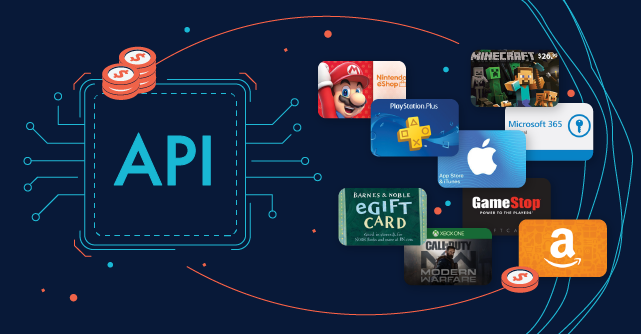APIs have proven to be powerful agents of transformation for digital businesses, and today’s emerging API trends now promise to deliver increasing value as we look ahead into 2023.
In essence, APIs have become indispensable connective tissues that bring together a wide and growing world of digital business applications. They are needed to better facilitate interactions and the sharing of data between distinct software at different companies, and now mandatory prerequisites for enabling our diverse world of businesses to share valuable digital infrastructure that would otherwise be very difficult to access.
Since the pandemic, more businesses have realized the need for innovation, and API products have played a key role in enabling new business development, the diversification of services, and the improvement of old products. Indeed, APIs have now become crucial in many product development lifecycles and the creation of new microservices.
Like the tech world itself, the API market is continuously evolving to meet these new market demands for innovation.
Wise business leaders must thus keep a closer eye on trends in APIs if they wish to also deliver increased value for company shareholders and customers alike, especially through:
- Increased efficiency: With APIs, businesses can automate numerous processes while developing and managing a product. That way, businesses achieve better outcomes faster.
- Improved UX: Businesses use APIs to optimize their offerings by presenting corresponding add-on products and services. Also, customers can enjoy personalized services as new API Technologies provides data that companies can use to deliver custom-made experiences.
- Better cost-efficiency: APIs are a cost-cutting technology that can help businesses save time and money.
- Enabling innovation: As consumer preferences and market demand rapidly change in an increasingly digital world, APIs engender business agility by capacitating them with the data and infrastructure to build novel and innovative outcomes.
In this article, we have underscored 10 emerging API trends that we believe herald the greatest benefits for businesses, IT teams and consumers.
As a business owner or the member of a development team, understanding how API development and implementation are evolving could prove to be powerful pieces of knowledge in directing how your team provides value.
[Reloadly offers digital payment APIs that have helped drive business transformation at companies in numerous industries through our airtime top up, digital gift card and utility payment APIs. Contact our support team today and get started.]
10 Key API Trends to Watch out for in 2023
1. More ubiquitous AI and machine learning (ML) features
Perhaps the top API trend to watch in 2023 will be the increasing power of machine learning and artificial intelligence.
Today’s algorithms are becoming even more responsive: better collating, synthesizing, and identifying data to enable automated decision-making.
With the ability to execute smarter decisions, businesses can deliver optimal experiences to customers and dominate the market by leveraging high-end features like speech recognition, natural language processing, language translation, computer vision and automated business transactions.
However, businesses still face a stumbling block.
Integrating AI/ML features is complex and expensive, and many companies do not have the organizational capacity or purchasing power to set up AI/ML development and integration units.
Here, new API initiatives are now addressing this problem by providing AI/ML features that can be easily integrated way more affordably and easily than setting up in-house facilities.
In this way, AI/ML API products are set to become ubiquitous.
Thus, businesses of all sizes can expect to utilize business intelligence, automation and analytics with minimal code and swift integrations.
2. Expanding API security
The rapid growth in the adoption of APIs opens up potential loopholes for attackers to probe and exploit, with a proliferation of connections leaving multiple pathways exposed to data breaches.
According to Arun Patra, Engineering Director at Reloadly, “this exposes organizations to security vulnerabilities.”
API platforms are responding to this situation by providing advanced API security measures such as authentication(AuthN), authorization (AuthZ), and rate-limiting policies.
Additionally, API products that offer security threat analysis as a service will gain prominence.
3. Novel, niche APIs become more available
More API protocols are witnessing a rise in adoption, as next-generation APIs like GraphQL, AsyncAPI, and gRPC compete with the dominant but now declining REST API.
Businesses can now choose platforms depending on their needs, selecting protocols based on “defined client and server specifications (gRPC), ease of getting aggregate results (graphQL) or preference for a lightweight approach (MQTT),” says Luca Ferrari, EMEA Senior Solution Architect at Red Hat.
More IT teams will begin to explore alternative protocols and combine them for optimal performance.
4. Developer experiences (DX) becomes increasingly prioritized
More businesses are becoming customer-centric, repackaging their business to place customers first. Similarly, API creators are prioritizing the developers’ experience (DX) – the user experience (UX) for developers – since they are the main consumers of API products.
With more API entrants making the space ever-more competitive, API businesses are working hard to stand out and appeal to developers by delivering seamless experiences, engaging API interfaces, more comprehensive developer portals, easy onboarding and better support.
API users, therefore, can be increasingly discerning when selecting an API for product development and should choose providers by ease of use, convenience and support quality.
5. APIs become ubiquitous and hyperconnected
The Internet of Things (IoT) will be further enhanced by APIs.
Commenting on the expanding nexus between day-to-day smart devices and API products, Luca Ferrari stated that “more edge-oriented APIs will control almost everything around end-users, and the physical world will be more connected to the programmable world.”
From payments to geolocation, more lightweight and resource-aware protocols will be needed to put into use, opening up a pathway for innovation for companies of all sizes to capture new market share.
6. Rise of the metaverse and hyper-virtualisation
Augmented reality and virtual reality will narrow the divide between the physical world and digital spaces.
Through the metaverse, the potential of a “phygital world” is “likely to demand the availability of data served using APIs of varied nature”, according to Arun Patra, Engineering Director at Reloadly.
He adds that “this data could be from everything related to global information, business, education, social etc. The programmable web is expected to continue growing and the vehicle for this data consumption would be APIs”.
As the years go by, more businesses are expected to compete for dominance in the metaverse, and APIs could help unlock competitive advantages.
7. More simplified fintech APIs emerge
The simpler the API, the better it is, in most cases.
Low-code, no-code tools are popular because of the ease with which they enable software development. By taking away the complexities of technical development, they can accelerate innovation, save time and minimize costs.
Also, fintech platforms increasingly seek APIs that can enable them to go to the market as soon as possible, so APIs that reduce the complexities of regulations and security will gain more acceptance.
8. API management takes center stage
APIs are critical business assets that help businesses adapt, evolve and innovate.
Effectively managing a growing catalog of APIs will result in the better performance of a business and its products, and this is why more companies are now using API management platforms or developing in-house management teams for better results.
Effective API management requires creating an API strategy that addresses the pinpointed functionalities and vulnerabilities that need to be addressed, the number of APIs in use, and the roles they would each play in digital transformation.
9. More APIs provide serverless architecture
APIs provide infrastructures for other businesses to build on, and serverless architecture is one of many resources an API can provide.
Serverless architecture includes cloud-based assets that facilitate the operation of applications and services without the need to procure or manage on-premise servers.
That way, businesses can focus on building their products free of the hassles of server maintenance.
10. Investments in APIs increase
Last year, more businesses invested in APIs than ever before, and that trend is expected to continue into 2023.
According to Google’s State of the API Economy in 2021, “companies report that their key priorities for 2021 included a focus on API security & governance (50%), growth & management of API adoption (41%), investment in building a developer community (38%), generating revenue by monetizing APIs (31%), making more services & data publicly available (31%), and growing their investment in API operations and monitoring (20%)”
Postman’s 2022 State of the API Report projects that “ investments in APIs will increase or stay the same over the next 12 months”
Thus, more businesses will continue to invest in APIs as the tech solidifies its role as a cornerstone of digital transformation and innovation.
Final thoughts
With the awareness of current trends in the API industry – cutting across API design, development and implementation – more businesses can be anticipated to adopt emerging APIs to optimize their business performance and efficiency.
By conducting company-wide evaluations, businesses can explore crucial points where implementing APIs would deliver massive value.
[Interested in building a digital payment service through an airtime top up, digital gift card and/or utility payment API? Contact our support team, and they’ll be glad to provide a free consultation.]



